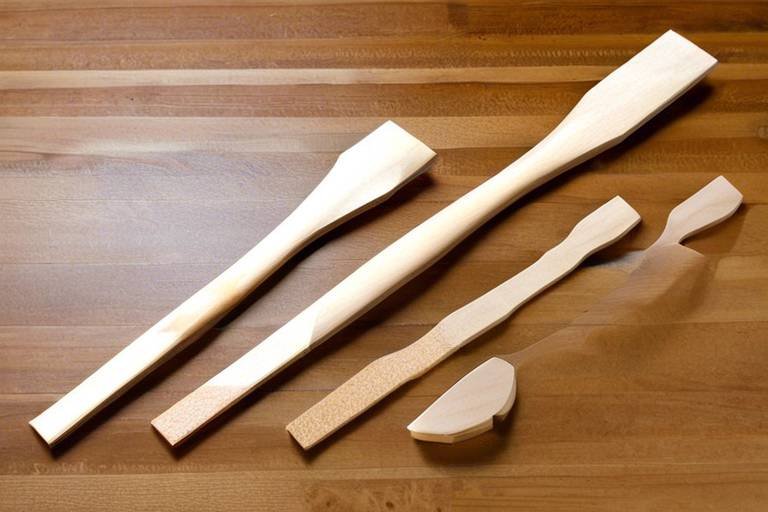Wooden Curtain Rods: DIY Steps and Ideas
Are you looking to add a touch of warmth and elegance to your home decor? Wooden curtain rods might just be the perfect solution! Not only do they provide a natural aesthetic that seamlessly integrates with various interior styles, but they also offer durability and customization options that can elevate your living space. In this article, we will explore the benefits of wooden curtain rods, guide you through the DIY process of making your own, and share some creative ideas to enhance your home decor with these stylish and functional elements.
Wooden curtain rods are more than just functional; they bring a unique charm to any room. One of the most significant advantages is their versatility. Whether your home features a modern, rustic, or traditional style, wooden rods can be customized to fit right in. They can be painted or stained to match your existing decor, allowing for endless possibilities. Furthermore, wooden rods are known for their strength, making them suitable for heavier drapes without bending or breaking. This combination of beauty and brawn makes them a fantastic choice for any homeowner looking to enhance their window treatments.
When it comes to selecting the right type of wood for your curtain rods, it's essential to consider several factors. Different woods offer varying levels of durability, appearance, and cost, which can significantly influence the overall look and functionality of your window treatments. For instance, if you're after a rustic feel, you might opt for reclaimed wood, while a sleek, modern look might call for a polished hardwood. Understanding the characteristics of different wood types will help you make an informed decision.
Let's dive into some popular wood choices for curtain rods:
- Oak: Known for its strength and durability, oak is perfect for heavy drapes. Its beautiful grain adds character, making it a top choice for those seeking both functionality and aesthetic appeal.
- Pine: This lightweight and cost-effective wood is easy to work with, making it ideal for DIY projects. Pine allows for creative customization while still providing adequate support for lighter curtains.
- Maple: A hardwood that boasts a fine, consistent grain, maple is excellent for a sleek finish. It's perfect for those who prefer a more refined look.
Once you've selected your wood, the next step is to consider finishing techniques that will enhance both the beauty and longevity of your wooden curtain rods. Proper finishing is crucial to protect your rods from wear and tear, as well as to achieve the desired look. Here are some methods you can explore:
- Staining: This technique allows you to enhance the natural grain of the wood while adding color.
- Painting: For a more modern look, painting your rods can provide a sleek finish that matches your decor.
- Sealing: A good sealant will protect your rods from moisture and damage, ensuring they last for years to come.
Creating your own wooden curtain rods can be a rewarding project that not only saves you money but also allows you to showcase your creativity. Follow these simple steps to measure, cut, and assemble your rods, ensuring a perfect fit for your windows and style.
Accurate measurements are crucial for a successful DIY project. Start by measuring the width of your window, and consider extending the rod beyond the window frame for a more expansive look. Once you have your measurements, use a saw to cut your wooden rods to the appropriate lengths. Remember, it's always better to measure twice and cut once!
After your rods are cut, it's time to assemble them. Securely attach brackets to the wall at the desired height, ensuring they are level. Then, slide on your finials and place the rod onto the brackets. This step is essential not only for functionality but also for achieving a polished and professional appearance in your home decor.
Wooden curtain rods can serve as a stylish focal point in your home. Here are some creative ideas for using them in various rooms:
- In the living room, use thick wooden rods with bold finials to complement rich drapes that add drama to the space.
- In a child's room, consider painting the rods in bright colors to match playful curtains, creating a fun atmosphere.
- In the kitchen, lightweight wooden rods can hold cafe-style curtains, adding a touch of charm to your cooking space.
1. Can I use wooden curtain rods for heavy curtains?
Yes! Wooden curtain rods, especially those made from hardwoods like oak, are perfect for heavy drapes due to their strength and durability.
2. How do I maintain my wooden curtain rods?
Regular dusting and occasional polishing with a suitable wood cleaner will keep your rods looking great. Avoid using harsh chemicals that can damage the finish.
3. Can I customize the length of my wooden curtain rods?
Absolutely! One of the benefits of DIY wooden curtain rods is the ability to customize their length to fit your windows perfectly.
4. What's the best way to attach finials?
Finials can typically be attached using screws or adhesive, depending on the design. Ensure they are securely fastened to avoid any accidents.
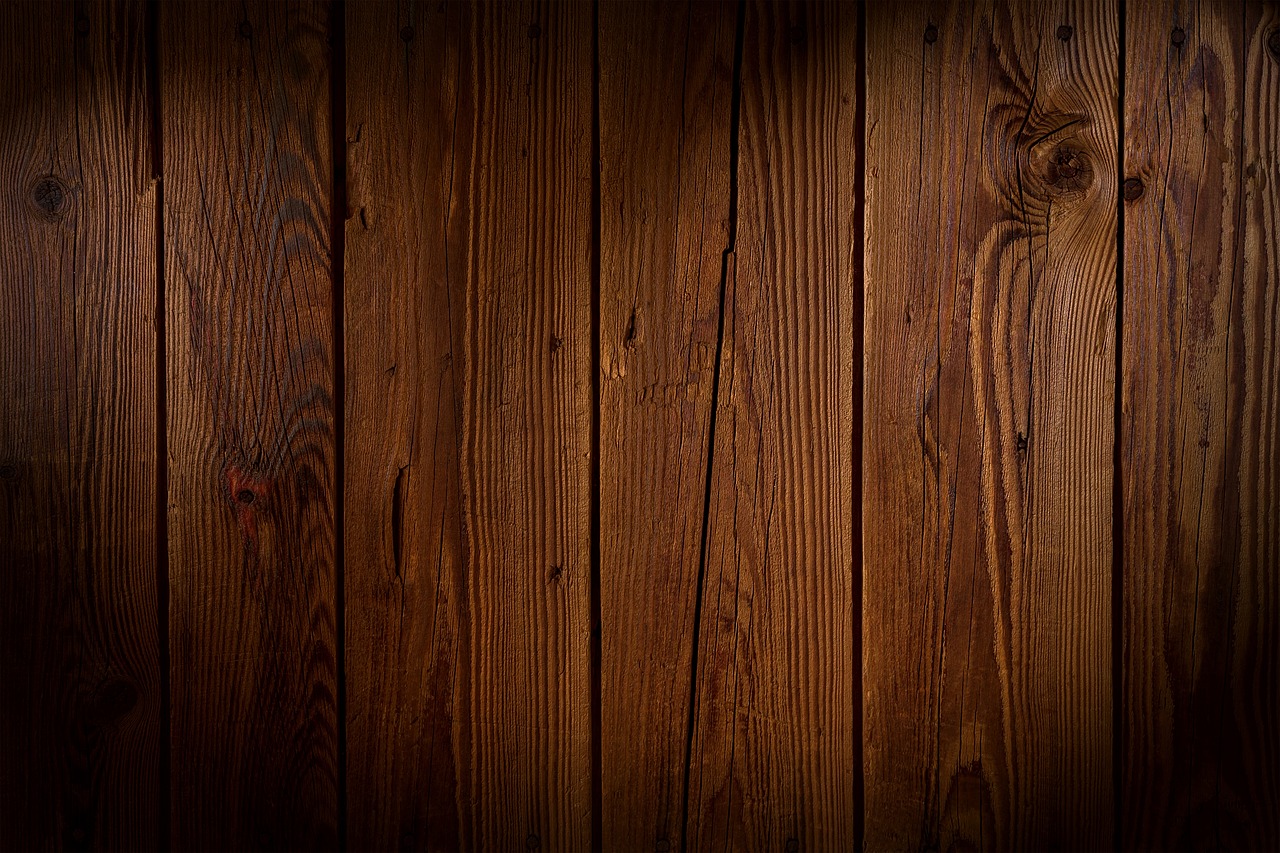
Benefits of Wooden Curtain Rods
When it comes to enhancing your home decor, wooden curtain rods are a game changer. They bring a touch of warmth and elegance that can transform any room. Unlike metal rods, which can sometimes feel cold and industrial, wooden rods offer a more inviting aesthetic. This natural look pairs beautifully with a variety of interior styles, from rustic to modern, making them a versatile choice for any homeowner.
One of the standout benefits of wooden curtain rods is their durability. Made from solid wood, these rods are built to last. They can support heavier drapes without bending or breaking, ensuring that your window treatments remain functional and stylish for years to come. Additionally, wooden rods can be easily customized to fit your specific needs. Whether you want to paint them a bold color or stain them to highlight the natural grain, the options are virtually limitless.
Another significant advantage is the customization potential. You can choose from a variety of woods, finishes, and styles. This means you can create a look that perfectly complements your existing decor. For instance, if you have a cozy, cabin-like space, a rustic pine rod with a natural finish might be just the thing. On the other hand, a sleek, stained oak rod could enhance a modern minimalist room. The ability to tailor these rods to your taste is a huge plus.
Moreover, wooden curtain rods are not just functional; they also add a decorative element to your windows. With unique finials and brackets available, you can make your curtain rods a focal point in your room. Imagine a beautifully crafted rod with intricate finials framing your windows, drawing the eye and enhancing your overall decor. This is where form meets function, creating an aesthetic that is both practical and pleasing to the eye.
In summary, the benefits of wooden curtain rods extend beyond mere functionality. They offer a natural aesthetic, durability, and customization options that can elevate your home decor. So, if you're considering new window treatments, think about how wooden rods can enhance your space while providing the support you need for your curtains.
- Are wooden curtain rods more expensive than metal rods? Generally, wooden rods can be pricier, especially if you opt for high-quality wood. However, the investment is often worth it for the durability and aesthetic appeal.
- Can I use wooden curtain rods for heavy curtains? Absolutely! Wooden rods, especially those made from hardwoods like oak, are perfect for supporting heavy drapes.
- How do I maintain wooden curtain rods? To keep your wooden rods looking great, dust them regularly and apply a wood conditioner or polish as needed to maintain their finish.
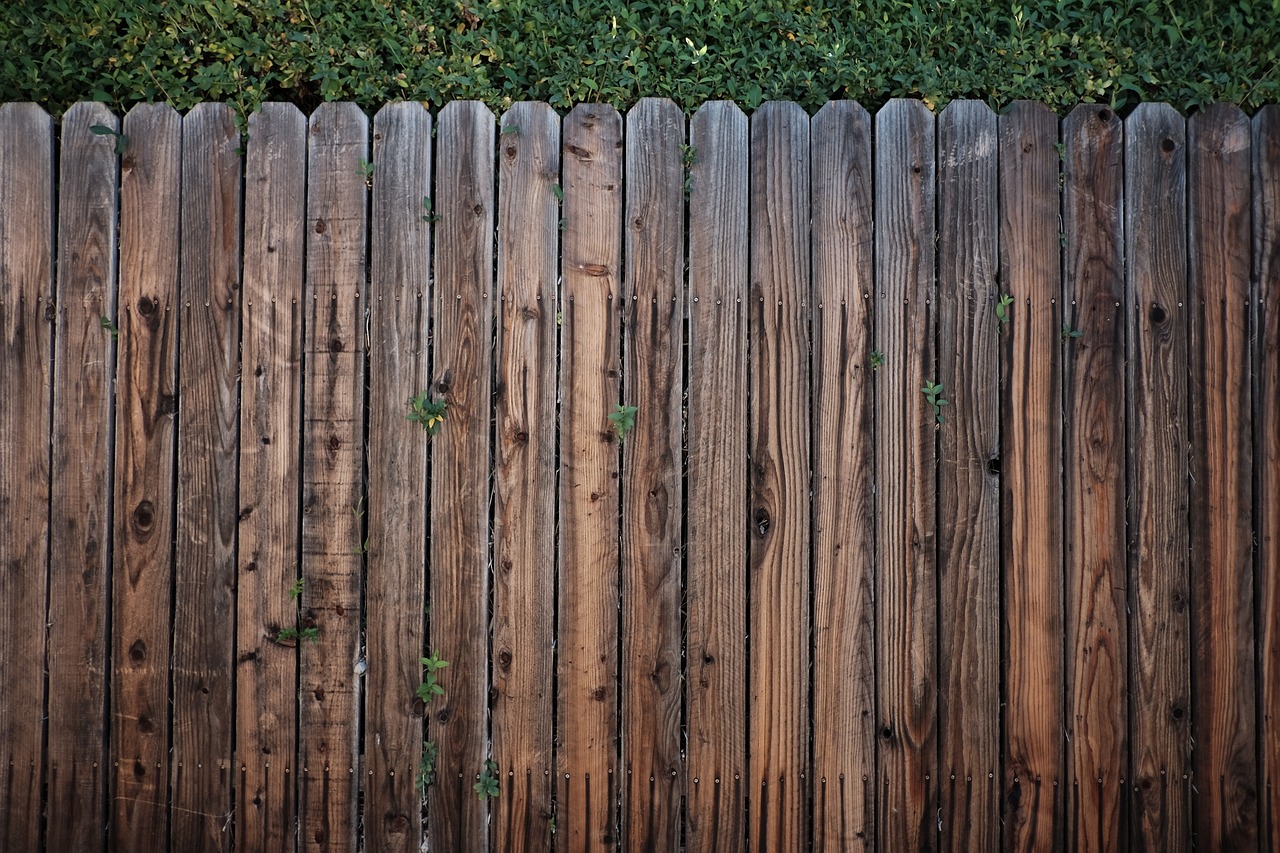
Choosing the Right Wood
When it comes to crafting your own wooden curtain rods, choosing the right type of wood is essential for both aesthetics and functionality. Different woods bring unique characteristics to your project, influencing not just the look but also the durability and cost. Imagine walking into a room where the curtain rods are not just a functional element but a statement piece that ties the entire decor together. Isn’t that what we all want?
First, consider the durability of the wood. If you have heavy drapes, you’ll want something robust like oak. Alternatively, if you’re opting for lighter curtains, a more cost-effective option like pine might be right up your alley. The choice you make will not only affect how well your curtain rods can support the fabric but also how they blend with the surrounding decor.
Next, think about the appearance of the wood. The grain patterns, color, and finish of the wood can significantly enhance your interior design. For instance, oak has a rich grain that adds depth, while pine offers a more rustic charm. You can even consider mixing different wood types to create a unique look that showcases your personal style. Here’s a quick comparison of popular wood types:
| Wood Type | Durability | Cost | Aesthetic |
|---|---|---|---|
| Oak | Very High | Higher | Rich grain, elegant |
| Pine | Medium | Low | Light, rustic |
| Maple | High | Medium | Smooth, modern |
Lastly, don’t forget about customization. Wooden curtain rods can be easily painted or stained to match your decor. This flexibility allows you to create a cohesive look throughout your home. Whether you want a natural finish that highlights the wood's beauty or a bold color that stands out, the choices are virtually limitless!
In conclusion, choosing the right wood for your curtain rods is not just about functionality; it's about creating a visual harmony in your space. So take your time, weigh your options, and let your creativity flow. After all, your home should reflect your style and personality!

Popular Wood Types
When it comes to selecting the right wood for your DIY curtain rods, understanding the various options available is essential. Each type of wood brings its own unique characteristics, which can significantly impact the overall aesthetic and durability of your window treatments. Here, we will explore some of the most popular wood types that you might consider for your project, helping you make an informed decision that aligns with your style and functional needs.
First on our list is oak. Known for its remarkable strength and durability, oak is a hardwood that can effortlessly support heavy drapes. Its rich grain patterns not only enhance its visual appeal but also add a touch of elegance to any room. If you're looking to make a statement with your curtain rods, oak is a fantastic choice. It can withstand the test of time, making it a worthwhile investment for your home.
Next, we have pine, a lightweight and cost-effective option that is perfect for DIY enthusiasts. Pine is incredibly easy to work with, allowing for creative customization that fits your personal style. While it may not be as durable as oak, it provides adequate support for lighter curtains and is ideal for those looking to save on costs without sacrificing style. Plus, the natural knots and patterns in pine can create a charming rustic look.
Another excellent choice is maple. This hardwood is known for its smooth texture and fine grain, making it a popular selection for those who prefer a more polished appearance. Maple is strong enough to hold heavier fabrics, yet it is also versatile enough to be painted or stained to match your decor. Its light color can brighten up a room, adding a fresh, airy feel that complements various design styles.
To summarize, here’s a quick comparison of the popular wood types:
| Wood Type | Durability | Cost | Ideal For |
|---|---|---|---|
| Oak | High | Medium to High | Heavy Drapes |
| Pine | Medium | Low | Lighter Curtains |
| Maple | High | Medium | All Types |
Choosing the right wood type not only affects the functionality of your curtain rods but also contributes to the overall design of your space. Whether you go for the robust oak, the budget-friendly pine, or the elegant maple, each wood type offers something unique to your home decor. So, take your time, weigh your options, and let your creativity flow as you embark on this DIY journey!
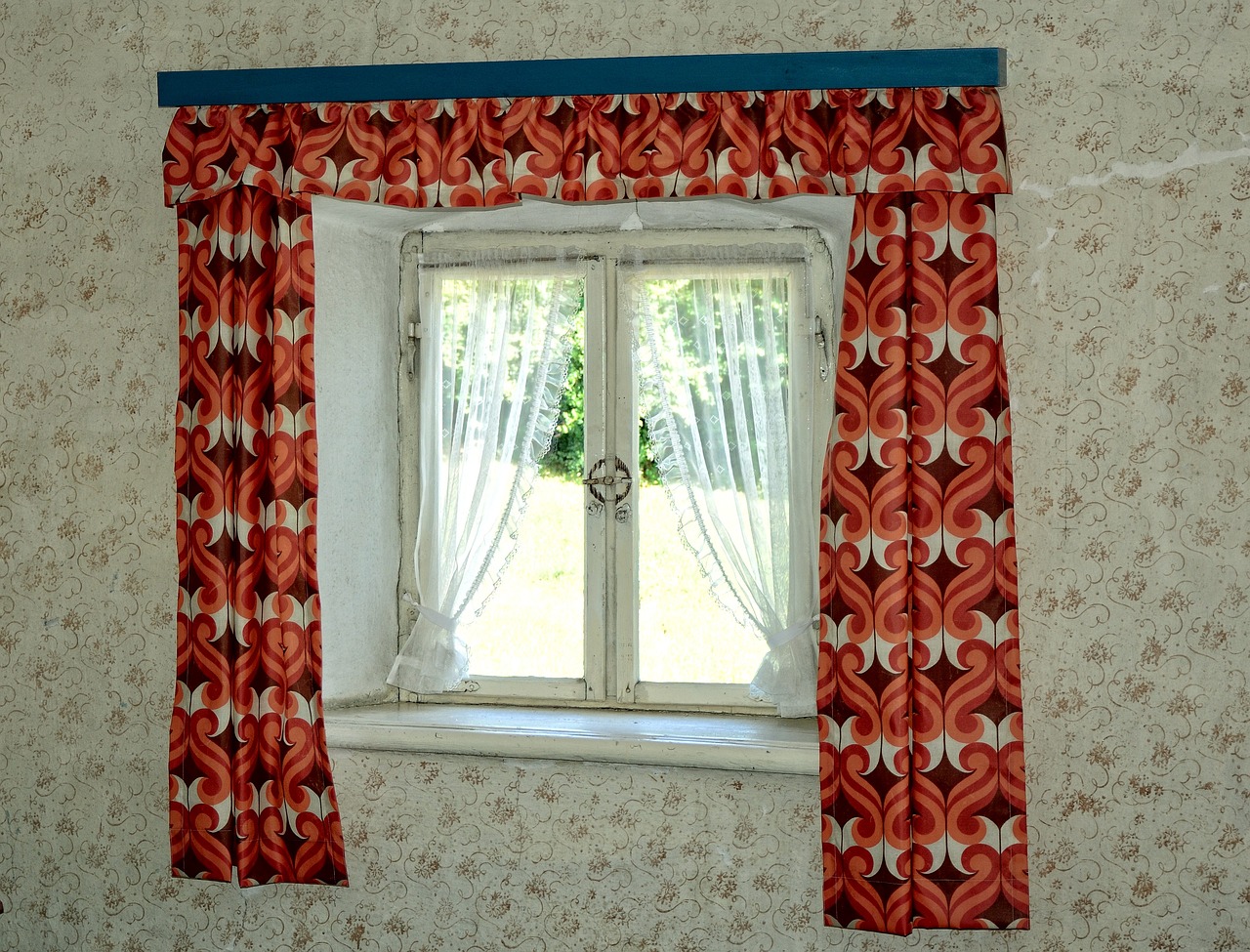
Oak: Strength and Durability
When it comes to selecting the perfect material for your curtain rods, oak stands out as a champion in the realm of strength and durability. This hardwood is not just built to last; it also brings an exquisite touch of sophistication to any room. If you’re hanging heavy drapes or curtains, oak is your go-to choice. Why? Its robust nature can easily support the weight of thicker fabrics without bending or warping, ensuring that your window treatments maintain their elegance and functionality over time.
One of the most appealing aspects of oak is its stunning grain patterns. Each piece of oak wood is unique, showcasing a variety of textures and colors that can add depth to your interior design. Imagine walking into a room and being greeted by the warm, inviting presence of oak curtain rods that perfectly complement your decor. Not only do they serve a practical purpose, but they also act as a visual statement that enhances the overall aesthetic of your space.
Moreover, oak is incredibly versatile. It can be left in its natural state to highlight its rich, organic beauty, or it can be stained or painted to match your specific style. Whether you prefer a rustic farmhouse vibe or a sleek modern look, oak can adapt to your vision. This flexibility makes it a popular choice among DIY enthusiasts and interior designers alike.
To ensure the longevity of your oak curtain rods, proper finishing techniques are essential. A good sealant can protect the wood from moisture and wear, allowing it to withstand the test of time. With the right care, your oak rods will not only hold up against the elements but will also age gracefully, developing a patina that adds character and charm.
| Benefits of Oak Curtain Rods | Details |
|---|---|
| Strength | Can support heavy drapes without bending. |
| Durability | Resistant to wear and tear, lasting for years. |
| Visual Appeal | Unique grain patterns enhance interior design. |
| Versatility | Can be stained or painted to fit any decor style. |
In conclusion, if you’re looking for a curtain rod that combines strength, durability, and undeniable beauty, oak is the way to go. It’s more than just a functional element in your home; it’s a stylish addition that can elevate the entire ambiance of your living space.
- How do I maintain oak curtain rods? Regular dusting and occasional polishing with a suitable wood cleaner will keep them looking great.
- Can I paint oak curtain rods? Yes, oak can be painted or stained to match your decor preferences.
- Are oak curtain rods heavy? While oak is a dense wood, the weight can be managed by using appropriate brackets and supports.

Pine: Cost-Effective Option
Pine is often hailed as the go-to wood for DIY enthusiasts and budget-conscious decorators alike. Its lightweight nature and affordability make it an ideal choice for those looking to create beautiful curtain rods without breaking the bank. Imagine transforming your living space with elegant drapes that hang gracefully from rods you crafted yourself—all while keeping your wallet intact!
One of the standout features of pine is its ease of workability. Whether you're a seasoned woodworker or a novice tackling your first project, pine is forgiving and easy to manipulate. You can easily cut, sand, and shape it to fit your specific needs, allowing for a high degree of customization. This means you can create rods that perfectly match your curtains and overall home decor style.
Moreover, pine has a natural beauty that can be enhanced with simple finishing techniques. You can leave it in its natural state for a rustic look, or apply a coat of paint or stain to match your interior theme. Here are a few finishing options to consider:
- Staining: Enhance the grain with a rich stain, bringing out the warm hues of the wood.
- Painting: For a modern twist, a coat of paint can transform the rods into a bold statement piece.
- Sealing: A protective sealant can help preserve the wood's beauty and durability, especially in areas with high humidity.
In terms of strength, while pine may not be as robust as hardwoods like oak, it can adequately support lighter curtains and drapes. This makes it perfect for bedrooms, living rooms, or any area where you prefer a softer touch. Plus, if you’re hanging sheer curtains or lightweight fabrics, pine will do the job just fine!
In summary, if you’re looking for a cost-effective option that doesn’t compromise on style, pine is a fantastic choice for your DIY wooden curtain rods. Its versatility, ease of use, and natural beauty make it a favorite among home decorators. So why not grab some pine, unleash your creativity, and elevate your home decor today?
Here are some common questions regarding wooden curtain rods, particularly focusing on pine:
- Can I use pine for heavy curtains? Pine is best suited for lightweight to medium-weight curtains. For heavier drapes, consider a stronger wood like oak.
- How do I maintain my pine curtain rods? Regular dusting and occasional reapplication of sealant will keep your rods looking fresh and prolong their life.
- Can I paint pine curtain rods? Absolutely! Pine takes paint well, allowing for endless customization options.

Finishing Techniques
When it comes to enhancing the beauty of your wooden curtain rods, play a pivotal role. Not only do they elevate the aesthetic appeal, but they also protect the wood from wear and tear, ensuring your investment lasts for years to come. Think of finishing as the final touch that transforms a simple piece of wood into a stunning centerpiece in your home. There are several methods to consider, each offering unique benefits and results.
One of the most popular methods is staining. This technique allows you to enhance the natural grain of the wood while adding color. Whether you prefer a rich mahogany or a light oak finish, staining can dramatically change the look of your curtain rods. It's essential to choose a high-quality wood stain that penetrates well and offers a durable finish. Apply it with a brush or cloth, and be sure to wipe off any excess to achieve an even tone.
Another method is painting. If you want to add a splash of color or match your rods to your decor, painting is an excellent option. Use a primer first to help the paint adhere better, and then choose a paint that is suitable for wood surfaces. Spray paint can provide a smooth finish, while a brush can give you more control over the application. A couple of coats will ensure the color is vibrant and long-lasting.
Lastly, sealing is crucial for protecting your wooden curtain rods from moisture and damage. After staining or painting, applying a clear sealant will provide a protective barrier. Look for a sealant that is specifically designed for wood and is resistant to scratches and UV rays. This step not only preserves the finish but also makes cleaning easier, allowing you to maintain the beauty of your rods with minimal effort.
In summary, the finishing techniques you choose for your wooden curtain rods can significantly impact their appearance and longevity. By staining, painting, and sealing, you can create a stunning look that complements your home decor while ensuring durability. Don’t forget to test your finishes on a small area first, so you can see how the wood reacts and adjust accordingly. Your wooden curtain rods are not just functional; they can also be a beautiful statement piece in your home.
- How do I choose the right finish for my wooden curtain rods? Consider the overall decor of your room and the type of wood you are using. A stain may enhance the natural beauty, while paint can add a pop of color.
- Can I use outdoor finishes on indoor curtain rods? It's best to use finishes specifically designed for indoor use, as outdoor finishes may not adhere well indoors and could release harmful fumes.
- How often should I reapply the finish? Depending on the wear and tear, you may need to reapply every few years. Regular maintenance can prolong the life of your finish.

DIY Steps for Making Wooden Curtain Rods
Creating your own wooden curtain rods can be a truly rewarding endeavor that not only enhances your home decor but also allows you to express your personal style. The process might seem daunting at first, but with a little patience and the right tools, you’ll find that it’s quite manageable. Let's dive into the essential steps you need to take to make your own wooden curtain rods, ensuring a perfect fit for your windows and a polished look that will impress your guests.
First and foremost, accurate measurements are crucial for a successful DIY project. You want to ensure that your curtain rods fit your windows perfectly. Start by measuring the width of your window frame. It’s a good idea to add an extra 4 to 6 inches on each side to allow your curtains to hang beautifully without blocking the light when they’re drawn open. Once you have your measurement, you can then move on to selecting the right length for your rods. This is where the fun begins—choosing the style and aesthetic that resonates with you!
After you’ve got your measurements down, it’s time to select the wood for your rods. Depending on your preference and budget, you might choose from a variety of woods such as oak, pine, or maple. Each type has its own unique characteristics. For instance, oak is robust and perfect for heavy drapes, while pine is lightweight and budget-friendly, making it a fantastic choice for lighter curtains. Once you’ve picked your wood, you can head to your local hardware store to purchase it. Don’t forget to have the store cut it to your desired lengths if you don’t have the tools at home!
Now comes the fun part—cutting your rods. If you’re using a saw at home, make sure to wear safety goggles and follow all safety precautions. Place your wooden pieces on a stable surface and cut them carefully according to your measurements. If you’re not confident in your cutting skills, consider asking a friend for help or using a miter saw for precision. Once cut, you’ll want to sand the edges smoothly to prevent any splinters and to prepare the surface for finishing.
Next, let’s talk about assembling your curtain rod. You’ll need to attach brackets to support the rod. Position the brackets at a height that allows your curtains to hang gracefully—typically around 4 to 6 inches above the window frame. Use a level to ensure they are straight and mark the spots for screws. Drill holes and securely attach the brackets with screws. Don’t forget to add finials to each end of the rod for that finished touch. Finials not only add style but also prevent the curtains from sliding off the ends.
Finally, you’ll want to consider finishing techniques to enhance the beauty and longevity of your wooden curtain rods. You can stain or paint them to match your decor, or simply apply a clear sealant to protect the wood while showcasing its natural grain. This step is vital as it not only adds character but also helps in protecting your rods from wear and tear. Whether you choose a bold color or a subtle stain, the right finish can elevate your curtain rods to a stunning focal point in your room.
With these steps, you’re well on your way to creating beautiful wooden curtain rods that will not only serve a functional purpose but will also enhance the overall aesthetic of your living space. Remember, the key to a successful DIY project is patience and creativity—so take your time, enjoy the process, and let your personality shine through!
- What type of wood is best for curtain rods? It depends on your needs; oak is strong and durable, while pine is cost-effective and lightweight.
- How do I measure for curtain rods? Measure the width of your window and add 4 to 6 inches on each side for optimal coverage.
- Can I paint or stain my wooden curtain rods? Absolutely! You can customize them to match your decor.
- How do I ensure my curtain rods are securely mounted? Use a level when installing brackets and make sure to screw them into wall studs for maximum stability.

Measuring and Cutting
When it comes to creating your own wooden curtain rods, the first step is all about precision. Accurate measurements are crucial for ensuring that your rods fit perfectly and look professional in your space. Start by measuring the width of your window. You’ll want to extend the rod about 3 to 6 inches beyond the window frame on each side. This not only allows the curtains to hang properly but also creates the illusion of larger windows, enhancing the overall aesthetic of your room.
Once you have your width measurement, it’s time to consider the height. The ideal height for your curtain rod typically sits around 4 to 6 inches above the window frame. However, this can vary depending on your personal style and the type of curtains you plan to use. For example, if you’re using floor-length drapes, hanging the rod higher can create a dramatic effect. Make sure to take into account the length of your curtains as well, as you want them to hang just above the floor or to the desired length.
Now, let’s talk about cutting. After you’ve determined the correct lengths for your curtain rods, gather your materials: a measuring tape, a saw (a miter saw or a hand saw will work), and a pencil for marking. Measure the length of your wood carefully and mark it with a pencil. It’s a good idea to double-check your measurements before making any cuts. Remember the saying, “measure twice, cut once”? It’s a mantra for a reason!
When cutting your wooden rods, ensure that you’re making clean, straight cuts. This will not only improve the look of your finished product but also help with the assembly later on. If you’re unsure about your cutting skills, consider practicing on a scrap piece of wood first. Once you’ve made your cuts, smooth the edges with sandpaper to avoid any splinters or rough spots. This attention to detail will pay off when it comes time to finish your curtain rods.
In summary, the measuring and cutting phase is essential for a successful DIY project. By taking your time and ensuring accuracy, you’ll set the foundation for beautiful and functional wooden curtain rods that enhance your home decor.
- What tools do I need for measuring and cutting wooden curtain rods?
You'll need a measuring tape, a saw (miter or hand saw), and a pencil. Sandpaper is also helpful for smoothing edges. - How do I determine the right length for my curtain rods?
Measure the width of your window and add 3 to 6 inches on each side. The height should generally be 4 to 6 inches above the window frame. - Can I use any type of wood for curtain rods?
While you can technically use any wood, it's best to choose durable options like oak or pine that can support the weight of your curtains.
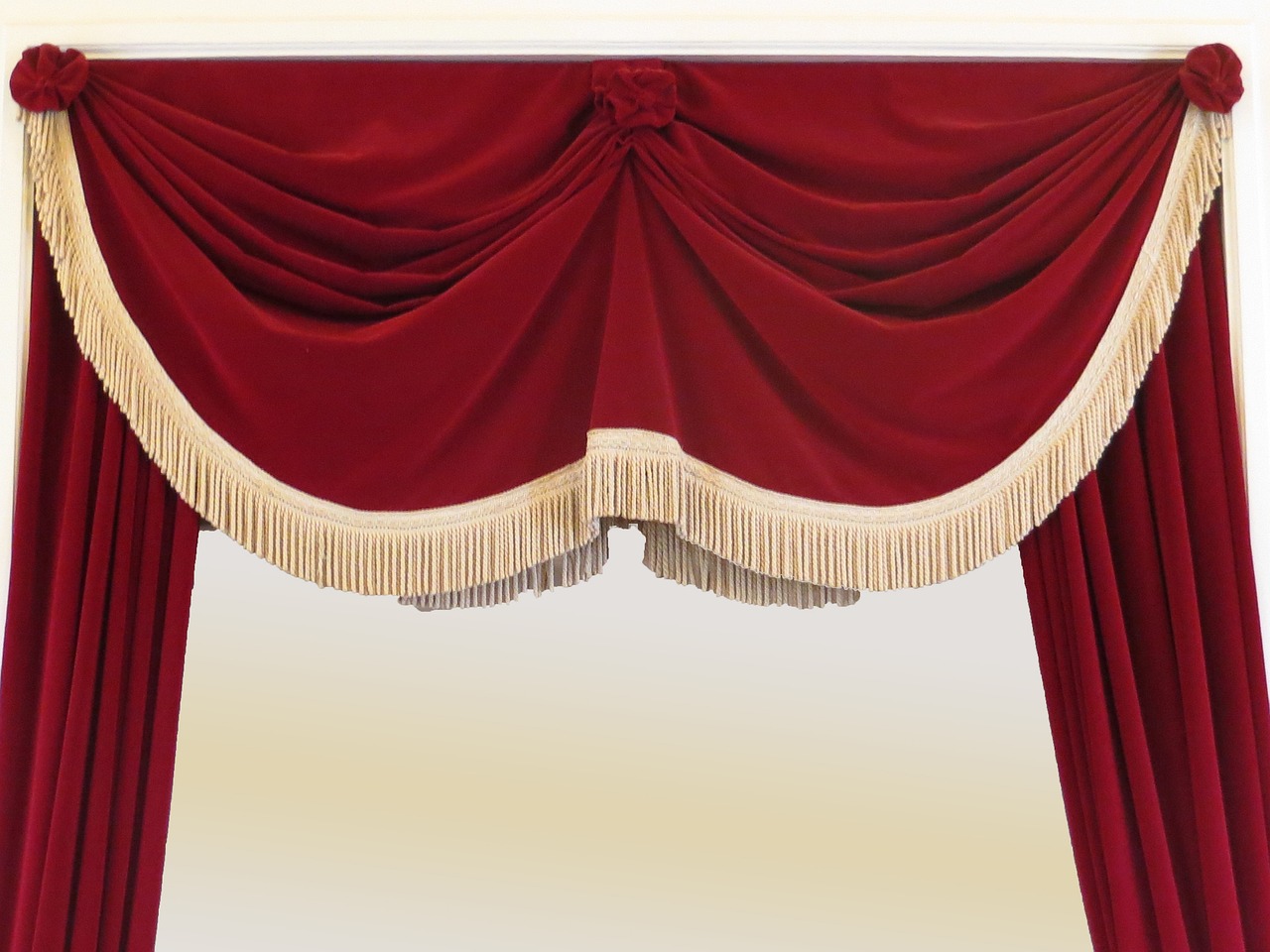
Assembling the Curtain Rod
Assembling your wooden curtain rods is where the magic truly happens! Once you've meticulously measured and cut your rods to the desired lengths, it’s time to put everything together. Start by gathering all the necessary materials: your cut wooden rods, brackets, finials, screws, and a drill. Having everything at hand will make the process smoother and more enjoyable. Remember, this is not just a task; it’s a chance to express your creativity and bring your vision to life!
First, you'll want to decide on the placement of your brackets. Typically, brackets should be installed about 4 to 6 inches above the window frame and extend 3 to 6 inches beyond the window’s width. This allows for maximum light and a more polished look. Use a level to ensure your brackets will be straight, which is crucial for both aesthetic appeal and functionality. Once you’ve marked the spots for the brackets, drill holes into the wall, insert wall anchors if necessary, and securely attach the brackets with screws.
Now, it’s time to slide your curtain rod through the brackets. If you’ve chosen to add finials (those decorative ends of the rod), make sure they’re securely attached to both ends of the rod before placing it on the brackets. Finials not only enhance the visual appeal but also help keep the curtains from sliding off the ends. You can even get creative with your finials—think about using unique designs that reflect your personal style!
Once the rod is in place, hang your curtains. This is the moment where you can step back and admire your handiwork. Adjust the curtains to your liking, ensuring they hang evenly. If you want to add a touch of elegance, consider using curtain rings that allow for smooth sliding. Not only does this add functionality, but it also gives a more sophisticated look to your window treatments.
Finally, take a moment to check the stability of your curtain rod. Gently tug on the curtains to ensure everything is secure. If you feel any wobbling, double-check the brackets and screws to make sure they’re tightly fastened. Once you’re satisfied, you can sit back and enjoy the beautiful transformation of your space. Remember, assembling your curtain rods is not just about functionality; it’s about creating a warm atmosphere that reflects your style!
- What type of wood is best for curtain rods?
It depends on your needs! Oak is strong and durable, while pine is lightweight and cost-effective. Maple offers a beautiful finish, so choose based on your style and curtain weight.
- How do I choose the right size for my curtain rod?
Measure your window width and add 3 to 6 inches on each side for a proper fit. This allows your curtains to fully open without blocking any light.
- Can I paint or stain my wooden curtain rods?
Absolutely! Wooden rods are highly customizable. Use paint or stain to match your decor and enhance the natural beauty of the wood.

Creative Ideas for Decorating with Wooden Curtain Rods
Wooden curtain rods are not just functional; they can also be a stunning element in your home decor. Imagine walking into a room where the first thing that catches your eye is a beautifully crafted wooden rod, elegantly holding up your favorite curtains. It's like the icing on the cake! Here are some creative ideas to help you enhance your living space using these charming rods.
First off, think about layering your curtains. You can use wooden rods to hang sheer curtains underneath heavier drapes. This technique not only adds depth to your window treatments but also allows you to control the amount of light entering your room. The contrast between the soft sheers and the robust wooden rod creates a lovely visual balance that can make your windows appear larger and more inviting.
Next, consider using your wooden curtain rods in unconventional ways. For example, you can transform them into a stylish room divider. By hanging lightweight fabric or even decorative panels from the rod, you can create a cozy nook or separate spaces in an open floor plan. This not only adds functionality but also contributes to the overall aesthetic of your home.
Another fantastic idea is to personalize your wooden curtain rods with finials. Finials are the decorative ends of the rods, and they come in a variety of shapes and materials. You can choose from classic wooden finials, modern metal designs, or even whimsical glass pieces. This small detail can make a huge difference in the overall look of your curtains. Imagine a rustic wooden finial on a rod in a country-themed room, or sleek metal finials in a contemporary setting.
If you’re feeling particularly crafty, why not try painting or staining your wooden curtain rods? This simple step can completely change the vibe of your room. A dark stain can add warmth and sophistication, while a bright color can bring a pop of fun and energy. Just think about how a vibrant turquoise rod can bring life to a neutral room!
Finally, don't forget about the mounting options. Instead of traditional brackets, consider using wall-mounted brackets that extend outwards. This not only gives a more modern look but also allows for greater flexibility in how you hang your curtains. It’s like giving your windows a new outfit!
In conclusion, wooden curtain rods can be a versatile and stylish addition to your home decor. By incorporating them in creative ways, you can elevate the aesthetic of any room while enjoying the benefits of functional window treatments. So, what are you waiting for? Grab those wooden rods and start transforming your space!
- Q: What type of wood is best for curtain rods?
A: The best wood depends on your needs. Oak is great for heavy curtains, while pine is more cost-effective for lighter fabrics. - Q: Can I paint wooden curtain rods?
A: Absolutely! Painting or staining your wooden rods can enhance their appearance and help them match your decor. - Q: How do I measure for curtain rods?
A: Measure the width of your window and add extra length for the rod to extend beyond the window frame for a fuller look. - Q: Are wooden curtain rods durable?
A: Yes! When properly finished and maintained, wooden curtain rods can be very durable and last for years.
Frequently Asked Questions
- What are the benefits of using wooden curtain rods?
Wooden curtain rods bring a warm, natural aesthetic to your space, enhancing the overall decor. They are not only durable but also customizable, allowing you to paint or stain them to match your interior style. Plus, they add a touch of elegance to any room!
- How do I choose the right type of wood for my curtain rods?
Choosing the right type of wood depends on your needs and budget. For heavy drapes, hardwoods like oak are ideal due to their strength and durability. If you're looking for something more cost-effective, pine is lightweight and easy to work with, making it perfect for lighter curtains.
- What finishing techniques should I use for wooden curtain rods?
To enhance the beauty and longevity of your wooden curtain rods, consider techniques like staining, painting, or sealing. These methods not only protect the wood from wear and tear but also allow you to achieve the perfect look that complements your home decor.
- What are the steps to DIY my own wooden curtain rods?
Creating your own wooden curtain rods can be simple! Start by measuring your window space accurately, then cut your wooden rods to the desired lengths. After that, assemble the rods by securely attaching brackets and finials to ensure a sturdy and attractive finish.
- Can I use wooden curtain rods in any room?
Absolutely! Wooden curtain rods can serve as a stylish focal point in any room, whether it’s the living room, bedroom, or even a home office. They not only provide functional window treatments but also enhance your decor with their natural charm.







